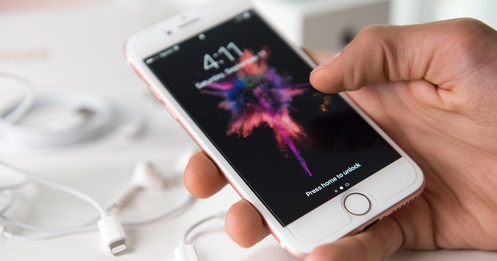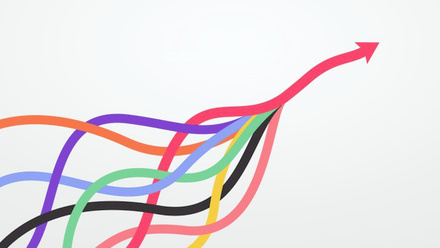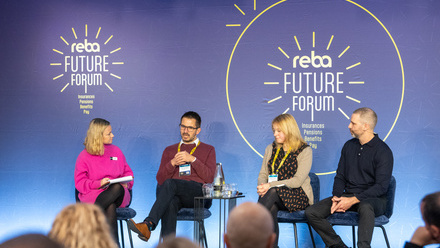8 lessons from the iPhone that we can apply to employee benefits

Apple's influence extends far beyond tech and telecoms and as a developer in employee benefits, I believe that we can learn a lot from leapfroging products such as the infamous iPhone. To celebrate the iPhone's 10th birthday, we have listed eight lessons from Apple that we can apply to employee benefits:
1) Design for an audience of one
One of the reason's the iPhone is called the iPhone is that the 'i' stands for individual. Apple created an era of individualism - an extension of the individual rather than just a product.
This concept has been applied to (and is now expected in) pretty much every website we visit and this doesn't just apply to Amazon to Facebook, but includes pensions and benefits portals too. Online platforms enable a person to engage with something that is relevant and is tailored to them.
'One size fits all' as a concept feels very long in the tooth now.
2) Raise the bar
The iPhone went beyond expectations; it showed people they no longer had to compromise - the touch screen, the camera, the ability to run multiple applications. But once people accepted that the bar had been raised, so too had their expectations.
This meant that other industries from retail to banking had to step up, because everybody knew there was technology out there that could do everything they needed. The same applies to pensions and benefits; employees want and expect the best tech experience in everything they do. They know it's possible and they're not prepared to tolerate a weaker experience.
3) Change perceptions
I was a late adopter of the iPhone. This was not a business phone (I thought). How could you send emails without a built-in keyboard? I was very happy with my built-in phone keyboard, thank you very much. But it's hard to imagine going back now. Steve Jobs rightly pointed out that the phone needed to work for people all the time and if you didn't need the keyboard, well you were stuck with it anyway.
No matter what the industry, sometimes you need to make the leap for people. The iPhone changed perceptions of what was possible. You can hear that from the gasps in the audience during the iPhone launch speech and from the fact that for the first time, non-tech people all over the world got excited about a tech product launch! This does channel the old Henry Ford quote that if he gave people what they wanted they would have asked for faster horses rather than the car.
4) Don't neglect the 'back-end'
"When you're a carpenter making a beautiful chest of drawers, you're not going to use a piece of plywood on the back, even though it faces the wall and nobody will ever see it. You'll know it's there, so you're going to use a beautiful piece of wood on the back. For you to sleep well at night, the aesthetic, the quality, has to be carried all the way through," said Steve Jobs.
The back of the chest is like the unseen parts of a technology product - the back-end code that a user doesn't see but that holds up the site. A pensions and benefits platform needs to be robust, scalable and adaptable without any "plywood" shortcuts!
5) Collaborate and think best of breed
Believe it or not, Apple didn't go it alone. Google and Yahoo! were both part of the consultation process for the development of the original iPhone.
In 2012 with the release of iOS 6, Apple replaced Google Maps with their own version. This resulted in some customers holding back from upgrading so that they could keep Google Maps. I was one of these people. Luckily, Google released a new iOS map app shortly after. I associate my iPhone with having a great user experience, but ironically, a lot of this is because of the apps on the phone that are not built by Apple.
In the benefits industry, there are lots of great products being built that are very good at their specific niche. The lesson here is to know when to build from scratch and when to join forces and collaborate. Sometimes linking to another product proves more lucrative than to try and go out alone and may enhance rather than confuse the overall customer experience.
6) Brand experience
A strong brand has a consistent signature across all experiences and products and this is something Apple has excelled at. Enter a store and you feel like you're stepping into an Apple-designed product. Software design fits effortlessly into the hardware, the rounded buttons matching the phone with its rounded corners.
The latest software in our industry mirrors this too, reflecting an employer's visual brand so that employees have a seamless experience. Accessing your benefits should feel no different to accessing any other company information -it's all part of the brand after all.
7) Test, test and improve
In 2014, I listened to Jony Ive (senior vice president of design at Apple) talk at the design museum in London. He discussed failure and how "we shouldn't be afraid to fail - if we are not failing we are not pushing. 80% in the studio is not going to work. If something is not good enough, stop doing it."
It's a key lesson. Keep trying to find new ways to innovate, but work out quickly whether your idea has potential/scope. When you launch a new benefit you don't know how successful it will be even if you've done your homework. Something that's right for now might not be right in a few years' time so keep testing, measuring and tailoring your offering and make sure you have that adaptability in your tech.
8) Change for the better
It's been 10 years and we've just seen iPhone X launch without a 'Home' button. That seems like a revolution to me now, but it will no doubt become the new norm as Apple will surprise us again in 12 months' time. Apple never stops innovating as it constantly strives to improve the user experience.
People don't mind change as long as they know why and clearly understand the advantages. The same can be applied with our industry platform where we need to be constantly introducing new features with the end-user in mind and to "walk in the shoes of our users".
Conclusion
Before the iPhone, smartphones were "not so smart and not so easy to use," according to Steve Jobs. Can we say the same about the products and their accessibility in our industry? As the consumer experience gets better and better, expectations around employee experience grow too with consumer marketing and employer branding continuing to become aligned. Or they should.
We often have a small window to engage people and get them interested. We have to do the best we can in that window and present ourselves in the best way possible.
Joe Shaffery is Orbit Creative practice lead at Capita Employee Benefits.
This article was provided by Capita Employee Benefits.
Supplied by REBA Associate Member, Capita Employee Solutions
UK leader in technology-enabled business process management and outsourcing solutions.







